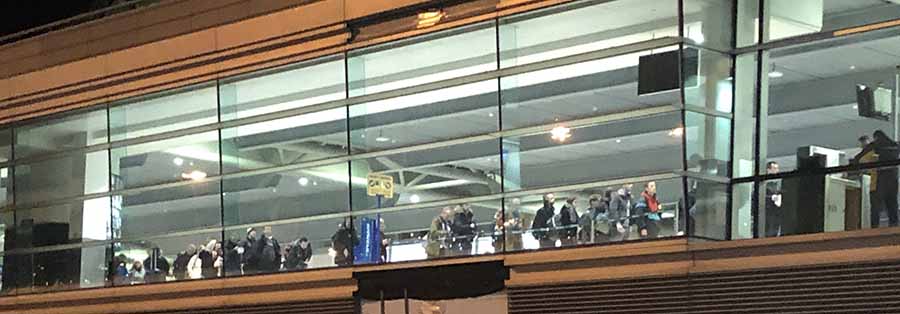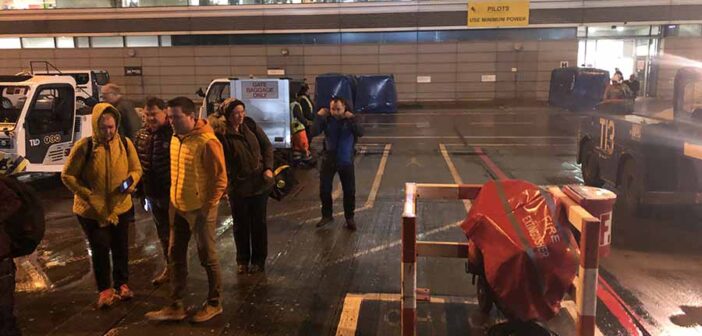
Brussels Airport, also known as Brussels-Zaventem, serves as Belgium’s primary international hub, welcoming over 25 million passengers annually with a well-organised and efficient travel experience. Located 12 kilometres northeast of Brussels city centre, the airport connects travellers to over 170 destinations across Europe, North America, Africa, and Asia, with airlines like Brussels Airlines, TUI fly Belgium, and Ryanair operating regularly. Its single-terminal design, divided into distinct concourses, ensures a smooth journey for both leisure and business travellers.
Accessing the airport from Brussels is straightforward, with multiple transport options catering to different preferences. The train station, located on level -1, offers direct connections to Brussels Midi Station and other Belgian cities, with a journey time of about 17 minutes and fares starting at €7.50. Buses, operated by De Lijn or private companies, depart from level 0, taking around 30 to 45 minutes to reach the city centre for approximately €7.50.
Taxis, available outside the arrivals hall, provide a quicker 20-to-30-minute ride, costing around €50, though fares can vary with traffic. For those driving, parking facilities near the terminal include handicapped spaces and a free drop-off zone, but passengers are advised to book parking in advance during peak periods to avoid delays. Cyclists and pedestrians can also access the airport via dedicated bike and walking paths.
The airport’s layout is designed for ease of navigation, with all services housed under one roof across multiple levels. Arrivals are on level 2, departures on level 3, and ground transport on level 0. The terminal splits into three concourses: Concourse A for Schengen flights, Concourse B for non-Schengen flights, and Concourse T for African destinations. A central Connector links the concourses, allowing seamless movement without additional security checks for most passengers. Clear signage and a compact design mean walking times between concourses are typically 5 to 10 minutes. However, peak travel periods can lead to congestion at check-in or security, particularly in Concourse B’s passport control for non-Schengen flights. Passengers should arrive two hours early for Schengen flights and three hours for non-Schengen to account for potential bottlenecks, which may arise from understaffing or technical issues with baggage systems.
Dining and retail options at Brussels Airport cater to a range of tastes and budgets. After security, passengers can explore duty-free shops, luxury boutiques like Hugo Boss, and local stores offering Belgian chocolates at places like Belgian Chocolate House. Concourse A has a broader selection, while Concourse B offers fewer options post-immigration, so passengers are advised to shop or dine before border control. Food outlets include quick bites at Starbucks, McDonald’s, and Burger King, alongside sit-down restaurants serving Italian and Asian cuisine. The airport’s dining and retail areas are well-maintained, though some passengers note repetitive food choices during peak hours.
Facilities enhance the passenger experience with practical amenities. Free Wi-Fi is available throughout the terminal, alongside charging stations, ATMs, currency exchange counters, and luggage storage at €10 per 24 hours. Accessibility is prioritised, with ramps, lifts, and dedicated assistance for passengers with mobility challenges or disabilities, bookable in advance. Lounges like The Loft in Concourse A and Diamond Lounge in Concourses A and B offer snacks, drinks, Wi-Fi, and showers for a fee starting at €37.50, with nap pods available for rest. Other amenities include a pharmacy, post office, multi-faith rooms, and a children’s play area, though nursing facilities are limited to basic stainless-steel tables.
On-time performance at Brussels Airport is generally dependable, with most delays stemming from airline-specific issues like equipment problems or air traffic control constraints, particularly during adverse weather. The airport’s flight information displays and mobile app provide real-time updates to keep passengers informed. For connecting flights, Brussels is a convenient hub, with a minimum connection time of 45 minutes for Schengen-to-Schengen flights and 1 hour 20 minutes for Schengen-to-non-Schengen transfers. A shuttle bus connects Concourses B and T, and most luggage is checked through to the final destination, though passengers on separate tickets may need to collect and recheck bags.
russels Airport is divided into concourses for Schengen and non-Schengen flights. Concourse A is for flights to Schengen countries. Concourse B is for flights outside the Schengen Area. Passport control for non-Schengen flights can be slow, especially for non-EU passengers, but e-gates for EU, UK, US, and Canadian passports help speed up the process.
While occasional overcrowding or long queues at immigration can disrupt the experience, Brussels Airport’s modern infrastructure, clear layout, and range of services make it a reliable choice for travellers. Ongoing improvements, such as new waiting areas and a Fast Lane security pass for €12.50, reflect a commitment to passenger comfort and efficiency.
Aer Lingus
Aer Lingus operates from Terminal A at Brussels Airport for flights to Dublin. Check-in desks are typically in the Check-in Area, Row 2–3 (desks 21–40 range), but exact assignments vary daily. Check-in opens 2 hours before departure and closes 45 minutes before departure. Online check-in is available 30 hours to 2 hours prior.
Flights to Ireland usually depart from Gates B in the non-Schengen area (A30–A60). Specific gate assignments are displayed on airport departure boards or via the Aer Lingus app. Brussels is a busy hub, so arrive 90 minutes before departure as recommended by Aer Lingus to clear security and reach the gate.
Ryanair
Ryanair operates from Terminal 1, with check-in desks typically in the main check-in area (desks 40–60). Passengers should check airport screens for exact assignments. Bag drop desks are open 2 hours to 40 minutes before departure.
Flights to Ireland (Dublin) typically depart from non-Schengen gates in Pier B (gates A20–A60). Gates are confirmed on departure boards or the Ryanair app. Ryanair operates flights to Dublin from Brussels Airport and also from Charleroi for this route, with schedules varying, so check booking details.




